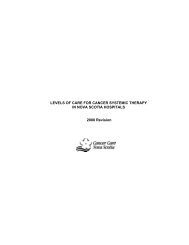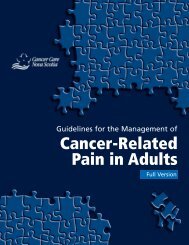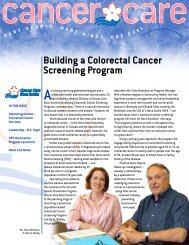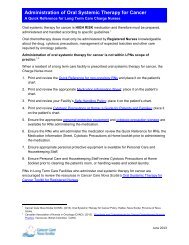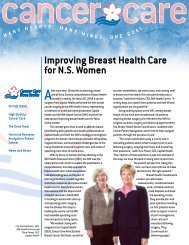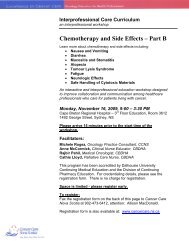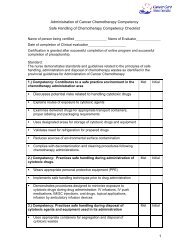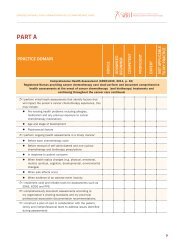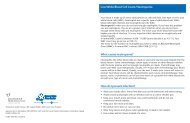Download - Cancer Care Nova Scotia
Download - Cancer Care Nova Scotia
Download - Cancer Care Nova Scotia
You also want an ePaper? Increase the reach of your titles
YUMPU automatically turns print PDFs into web optimized ePapers that Google loves.
Patient Education Approaches, continued<br />
When using "teach-back," health professionals ask patients to state in their own words key<br />
concepts, decisions, or instructions just discussed:<br />
You could begin with statements such as, "I want to make sure I explained this<br />
clearly. When you go home today, what will you tell your [friend or family member]<br />
about [key point just discussed]?" or “Please explain to me how and when you will<br />
take your medications, so I can be sure I explained everything correctly.” Or “What is<br />
your understanding of your treatment plan?”<br />
If patients cannot restate/demonstrate the instructions correctly, then you explain it<br />
again by drawing pictures or using simpler words.<br />
Then the teach-back method is used again and repeated until you confirm that the<br />
key message is correctly understood. If you know you explained this well but after<br />
two or three tries the patient still does not "get it," then look for other explanations<br />
(beyond your teaching) about why the message was not understood. 42,43,45<br />
When summarizing and restating key aspects of what patients are sharing, you might say, "I<br />
just want to make sure that I heard you correctly. When you said [key point], I understood<br />
that to mean [x]…. Is that correct? Is there something I missed?" By doing this, you not only<br />
confirm (or not) that messages are correctly understood but also demonstrate your<br />
commitment to helping patients feel that they've been heard. In addition, this line of<br />
questioning models the teach-back technique so that patients are not surprised when you<br />
ask them to repeat back what you just said. 42,43,45<br />
When using the teach-back technique, health professionals take responsibility for adequate<br />
teaching. If patients cannot explain or demonstrate what they should do, the health<br />
professional must assume that they did not provide an adequate explanation or<br />
understandable instructions and that they must try another approach to ensure that patients<br />
learn what they need to know. 42,43,45<br />
25



